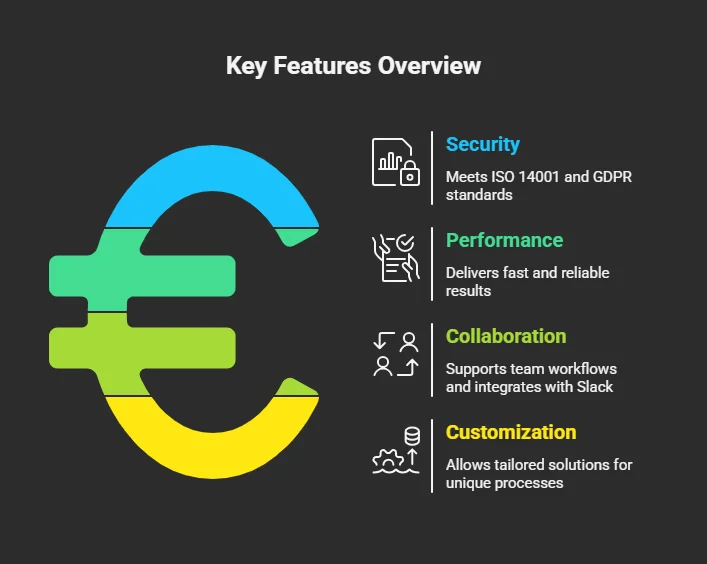Ultimate Guide to Automation and Tooling: Solutions, Tools, and Strategies
Introduction
Automation and tools change the way firms work in 2025. Across many fields, these technologies make things easier, save money, and increase output. They make things more efficient and encourage new ideas in many areas of business, from manufacturing to retail. This tutorial goes into excellent detail about automation and tooling, including definitions, benefits, the best tools, how they are used in business, and how to be successful with them. It is easy to understand since it employs simple language to explain complicated ideas. This tutorial will help you succeed whether you’re automating workflows or upgrading your equipment. If you want to read more details, please visit this page.
What is automation and tooling? A Comprehensive Overview
Defining Automation and Tooling in Today’s Industries
Automation uses technology to do things with as little help from people as feasible. It has AI, robots, and software systems like CRM automation, among other things. Tooling is the use of special tools, such as CNC machines, robotic arms, or test tools, in making things. Automation and tools work together to speed up and improve processes. IoT, AI-driven automation, and AR/VR integration are just a few of the new technologies that will make systems smarter in 2025. For example, smart factories watch over production lines in real time, which cuts down on mistakes and downtime.
Automation includes both hardware and software. Zapier and other tools make it easy for apps to work together so that workflows go smoothly. Hardware, such as automated production cells, takes care of physical tasks. Tooling makes sure that things are correct and uses materials like carbon fiber to make them last. This combination works for all kinds of businesses, from healthcare to cars, and always gets the same results.
Why Automation Matters: Benefits for Businesses and Individuals
Automation and tooling change how things work. Automation and tooling enhance productivity by accomplishing more tasks with fewer resources. Costs go down when there are fewer mistakes and fewer staff needed. When outputs are exact and consistent, quality grows better. Things are safer because machines do dangerous jobs. Improved workflows enhance operational efficiency. Scalability lets businesses handle abrupt spikes in demand. Automation provides you withyou with information about your data that helps you make better decisions. Businesses that come up with innovative concepts quickly are more likely to win.
People have more time to come up with new ideas thanks to automation. Teams don’t do the same things over and over; they come up with new ideas and strategies. For example, marketing automation tools handle email campaigns so that workers may plan them. Robotic arms put together parts in manufacturing, which helps people not become as weary. Because of these benefits, businesses now need tools and automation.
Key Industries Leveraging Automation and Tooling
Tools and software are useful in various contexts:
- Manufacturing: The electronics and automotive sectors employ robotic assembly and CNC machines to enhance precision.
Keep yourself healthy with the help of automated diagnostics and robotic surgery in healthcare.
In the retail industry, chatbots assist customers with online shopping and inventory management.
In the financial sector, instruments help detect fraudulent activity and enhance the efficiency of trading platforms. - Logistics: Supply networks are made more efficient by employing self-driving automobiles and robotics in retailers.
Smart infrastructures automate the process of energy sharing, making it easier for people to do so. - Farming: with the correct equipment for automated planting, farmers may increase food output. Construction sites that make use of 3D printing and autonomous vehicles complete their tasks much more quickly. Precision in size and shape is essential in the aerospace industry, where tools play a key role in the manufacturing process. Automating the process of making reservations and communicating with clients is a boon to the hospitality industry. Each industry independently develops tools and automation to meet specific needs. As a result, the company grows and generates new ideas.
Top Automation Tools for Beginners and Experts in 2025
Best Automation Software and Platforms to improve Business Efficiency
It’s important to choose the correct tools to get things done. The best automation tools for 2025 are
- Zapier integrates more than 500 apps, allowing you to automate your workflow without needing to write any code. An excellent way to automate marketing and customer relationship management.
- N8N: A free platform for youryour own workflows. Great for IT teams that want different responses.
- Make: A tool that allows you to do many things automatically. Helpful for sales and marketing.
- Outfunnel: Connects data for a self-running CRM. It’s easier to deal with customers.
- Whalesync: This program helps things operate more smoothly by letting you sync data between different platforms.
- UiPath is the best RPA tool for getting rid of boring digital jobs.
- Automation Anywhere: It automates processes for the complete company.
These technologies can do a lot of different things, from simple integrations to more complicated workflows.

Open-Source vs. Paid Automation Tools: Which Is Right for You?
Open-source tools, such as n8n, provide a wider range of potential uses and are more affordable. Teams with the necessary engineering expertise and a need for specialized workflows will find them to be an excellent fit. Paid alternatives, such as Zapier, offer superior usability and support. Anyone who isn’t tech-savvy or whose company needs to launch soon would benefit greatly from their services. Your ability to connect everything, your budget, and your level of technical expertise should all be considered before making a final decision. For instance, Zapier streamlines marketing processes, while n8n automates tests with artificial intelligence.
Beginner-Friendly Tools for Getting Started
Are you new to automation? Begin with these:
- No-Code Solutions: Zapier and Make let you automate processes like collecting rent or sending email reminders by dragging and dropping things.
- Low-Code Platforms: n8n lets you do some light coding to make workflows that are just right for you, which is great for bringing on new suppliers.
- Free Tools: IFTTT and other tools like it are great for novices who don’t want to spend a lot of money on automation. These technologies make automation easy to use, even for people with little technical understanding.
Advanced Automation and Tooling for Industrial sector
For use in industry, think about:
- Robotic Process Automation (RPA): UiPath and Automation Anywhere automate digital processes like entering data.
- CNC Machines: Siemens and Haas make precise tools for making things.
- SCADA Systems: Inductive Automation’s Ignition watches industrial processes as they happen.
- PLCs: Siemens SIMATIC and Allen-Bradley are two companies that make control systems for automated production lines.
- Alaark Tooling: Makes specialty tools for the aerospace and automotive industries.
- Missouri Tooling: Makes tools and dies with great accuracy.
|
Tool |
Type |
Key Features |
Best For |
|
Zapier |
No-code |
Connects 500+ apps, automates workflows |
Marketing, CRM integration |
|
n8n |
Open-source |
Self-hosted, customizable workflows |
Technical teams, custom solutions |
|
Make |
Visual platform |
Multi-step automations, sales/marketing |
Sales processes, team workflows |
|
Outfunnel |
Data sync |
CRM automation, data integration |
Customer relationship management |
|
Whalesync |
Data sync |
Two-way synchronization |
Cross-platform data management |
|
UiPath |
RPA |
Automates repetitive digital tasks |
Business process automation |
|
Siemens SIMATIC PLC |
Industrial |
Programmable logic controllers |
Manufacturing control systems |
Pros and Cons of Top Tools
There are pros and cons to each instrument. Zapier is simple to use, but it costs a lot to utilize on a wide scale. n8n is adaptable, but you need to know how to set it up. Although they require specific skills to operate, Siemens PLCs are excellent for automating factories. Look at things like scalability, security, and how easy it is to use to find the best fit.
How to Choose the Right Automation and Tooling Solutions
Assessing Your Business Needs
Find the pain sites first. Want to speed up production? Better service for customers? Set targets like cutting down on downtime or raising quality. Make sure it works with your current systems, such as ERP or CRM software. Scalability makes sure that solutions can expand with your organization. For instance, a retailer would put inventory automation at the top of their list, whereas a manufacturer needs CNC tooling.
Comparing Features and Capabilities
Evaluate tools for:
- Security: Meets standards like ISO 14001 and GDPR for data protection.
- Performance: Delivers reliable, fast results across applications.
- Collaboration: Supports team workflows and integrates with platforms like Slack.
- Customization: Allows tailored solutions for unique processes.

Cost vs. Value: Budgeting for Automation
Find a balance between expenditures and return on investment (ROI). You can save money up front by using open-source tools like n8n, but you might need engineering help. Paid programs like Zapier are easy to use, but you have to pay a monthly charge. CNC machines and other industrial tools cost more up front but save money in the long run. According to case studies, the payback period is usually short, often just a few months.
Case Studies: Real-World Automation Success Stories
- Kongsberg Automotive lowered cycle times by 20% by using automated production cells. The products exhibit enhanced uniformity.
- Upset: Used CNC tools, which improved accuracy and customer satisfaction by 15%.
- Buck CNC Technik: Updated old machines, which cut operational expenses by 15%.
- E-commerce Retailer: Used Zapier to automate their inventory, which cut stockouts by 25%.
- Healthcare Provider: Used RPA to update patient records automatically, which saved them 10 hours a week.
Building Expertise in Automation: Step-by-Step Strategies
Getting Started with Automation as a Beginner
Do small things at first to boost your confidence. Refer to the free guides on websites like the Learning Center for Zapier or the community boards for n8n. Set up easy automations, like sending emails at set times or syncing data. Make sure you have certifications like ISO 9001 for handling quality or IATF 16949 for cars. They help you get jobs because they prove that you have the skills you say you do.
Advanced Techniques for Optimizing Workflows
Learn how to use AI-driven automation for predictive maintenance. AI systems, for instance, can forecast when equipment may break down, which cuts down on downtime. Use IoT to keep an eye on things in real time as you move into Industry 4.0. Machine learning improves the quality control and production scheduling. Use technologies like Ignition SCADA to keep an eye on performance indicators across systems.
Integrating Automation with Existing Systems
Retrofitting legacy machines saves costs. Solutions from ATC Automation upgrade old equipment with modern controls. Integrate automation with ERP and CRM systems for seamless data flow. For example, Outfunnel syncs customer data with Salesforce, streamlining sales processes. Ensure compatibility to avoid disruptions.
Overcoming Common Challenges
New users face hurdles like steep learning curves or integration issues. Start with user-friendly tools to build confidence. Use vendor support for complex setups. Test automation in small batches to catch errors early. Regular training keeps teams updated on new features.
Why Partner with Us for Automation and Tooling Solutions
Our Proven Expertise and Certifications
We hold IATF 16949 and ISO 14001 certifications, ensuring top standards. Our team belongs to industry groups like SME and AMT, proving our authority. With years of experience, we deliver tailored automation and tooling solutions.
Comprehensive Services and Capabilities
We offer:
• Design Software: Uses simulations to improve processes.
• 3D Scanning: ROMER Arms make sure that prototyping is accurate.
• Custom Tooling: Makes tools and dies for the automotive and aerospace industries.
• Assembly Solutions: makes it easier to make electronics and energy.
• Security Orchestration: Uses tools that are ready to meet compliance standards to keep data safe.
How We Deliver Efficiency and Cost Savings
Our modular tooling uses lightweight materials like carbon fiber and aluminum. This reduces energy costs while maintaining durability. Our solutions integrate seamlessly, ensuring high performance and minimal downtime.
Industry Trends Shaping Automation and Tooling in 2025
The Rise of AI Workflow Automation
AI transforms automation with predictive analytics. Tools like UiPath use AI to optimize workflows. For example, AI-driven test automation tools catch software bugs faster. These systems learn from data, improving accuracy over time.
Industry 5.0: Human-Machine Collaboration
Industry 5.0 blends human creativity with machine precision. Collaborative robots (cobots) work safely alongside workers. They handle repetitive tasks, freeing humans for innovation. This trend boosts productivity and job satisfaction.
Sustainable Automation Practices
Eco-friendly tools reduce energy use and waste. For example, smart grids optimize power distribution. Sustainable tooling aligns with global goals, like reducing carbon footprints. Businesses adopting these practices gain customer trust.
The Role of Data Management in Automation
Data drives automation success. IoT devices collect real-time metrics. SCADA systems analyze performance, spotting inefficiencies. For example, a factory using Ignition SCADA reduced defects by 10% through data insights.
Emerging Technologies
AR/VR enhances training for automation systems. Blockchain ensures secure data sharing in supply chains. 5G speeds up IoT connectivity, enabling faster automation. These technologies shape the future of automation and tooling.
Practical Steps to Implement Automation in Your Business
- Submit a Request for Quote (RFQ): Share your needs for a custom proposal.
- Collaborate on Custom Solutions: Work with experts to design tailored strategies.
- Evaluate and Select Options: Choose from RPA, CNC, or software solutions.
- Deploy and Optimize: Implement and fine-tune for peak performance.
- Measure ROI and Scale: Track metrics like time savings and expand automation.

Tips for Successful Implementation
- Start small to test solutions.
- Train teams on new tools.
- Monitor performance regularly.
- Use analytics to optimize workflows.
- Partner with certified providers for reliability.

